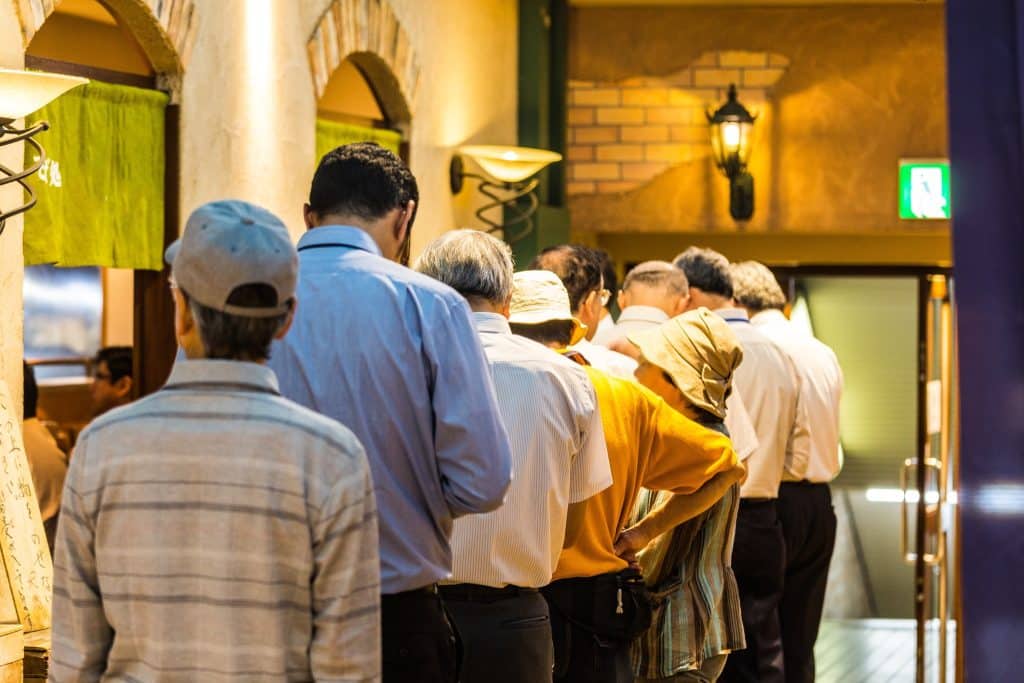If you want a clean answer to “city pass worth it,” start with your plan, not the brochure. List what you will actually enter, total the à-la-carte prices, compare to the pass price, then assign a value to time saved from shorter lines and simpler ticketing.
Do this once and you will stop second-guessing “city pass worth it” on every trip. The method works whether you are stacking museums in New York, chasing skyline views in Paris, or plotting food-first days with one blockbuster view. Keep it honest; numbers beat hype.
Before we crunch anything, remember that your time and energy are part of the budget. A pass can reduce friction; it can also push you to do more than you enjoy. Your “city pass worth it” result should reflect your style, your walking speed, and your appetite for lines. The approach below is simple: a mini-calculator, clear rules, and reality checks you can run in Tokyo or anywhere else in minutes.
The Mini-Calculator That Decides “city pass worth it”
You need only three inputs. Put them in a tiny table or a notes app and you will have a yes/no answer fast.
- Cash price (à la carte). List only the attractions you truly plan to enter this trip. Add their standard adult prices. Do not include “maybe” ideas; those inflate “city pass worth it” unfairly.
- Pass price (the product you would actually buy). Pick the pass length that matches your real sightseeing window. Buying extra days you cannot use makes “city pass worth it” look worse than it is.
- Time value (queue and logistics savings). Estimate minutes saved per stop from skipping ticket windows or using fast-track lines. Total the minutes and multiply by a personal hourly value for vacation time. Ten to twenty dollars per hour is reasonable; the point is consistency.
Decision rule: (Cash price – Pass price) + Time value ≥ 0 → city pass worth it. If the result is negative, pay as you go.
A Worked Example You Can Swap With Your Prices
Two days, four paid stops: an art museum ($35), an observation deck ($32), a harbor cruise ($40), and a science museum ($28). À-la-carte total: $135. A two-day pass is $119.
You expect roughly 25 minutes saved at each venue, or 100 minutes total. If you value an hour on vacation at $15, your time value is $25. Calculation: ($135 – $119) + $25 = $41 → city pass worth it.
Now remove one stop because your flight arrives late. New total: $107. Recalc: ($107 – $119) + $25 = $13 → still city pass worth it, but thin. If bad weather cancels the cruise, the margin can slide to zero. Completion rate, more than any other factor, swings “city pass worth it” from yes to no.
Reality-Based Inputs: How to Avoid Wish-Casting
Your calculator is only as good as its inputs. Pick them with discipline and the “city pass worth it” answer will be trustworthy.
Only list “will do” attractions. Brainstorm elsewhere. The grid gets commitments.
Map your stops by neighborhood. Geography prevents optimistic stacking that breaks “city pass worth it” on the ground.
Confirm reservations and blackout times. Some headline venues require timed entry even with a pass; if your window is sold out, reduce the value in your math.
Use the best legitimate cash price. If an attraction offers an online discount or a late-entry ticket, compare against that—not the highest door price—when you test “city pass worth it.”
Hidden Levers That Quietly Change the Math
Completion rate. Most travelers do less than planned. Base your decision on the number of stops you reliably complete, not on wishful thinking.
Attraction mix. Passes shine with several mid-priced entries versus one giant headliner and lots of free wandering. Balance helps the value case.
Age and discounts. Child, student, or senior pricing narrows the cash gap. Recalculate the numbers per traveler.
Season. Summer lines can add an hour to your day; off-season lines can vanish. Time savings expand or shrink the margin.
Pace. If your happiest day is two highlights and a long lunch, accept that and let the math reflect it. If you love dense museum days, the pass often wins.
Small Moves, Big Gains
Cluster paid sights into one or two tight days. That shortens walks, boosts completion, and improves the odds the pass pays off.
Anchor each pass day with one must-see and one flexible stop.
Book timed entries early. Morning slots cut delays and keep your numbers intact.

What People Forget to Count (But Should)
Transit perks. Some products bundle public transport or hop-on hop-off credit. If you will use it, add it to the benefit side.
Audio guides or special exhibits. If you would pay for them anyway, count them—these extras often decide the outcome.
Refund and change rules. Flexible terms let you pivot when weather or fatigue hits. That optionality has real value in the calculation.
When “city pass worth it” Is Clearly No
You only want one pricey headliner. One big ticket plus free parks rarely justifies a bundle; “city pass worth it” will likely be negative.
You prefer open-ended wandering. If your favorite days are neighborhoods, street food, and viewpoints, there is no need to force museums. A confident “not city pass worth it” is a smart choice.
You travel off-peak with short lines. When queues disappear, time value collapses. The equation tilts away from “city pass worth it.”
When “city pass worth it” Is Clearly Yes
You plan four or more paid attractions in two days. Most passes pencil out fast; odds are high that “city pass worth it” lands positive.
You hate lines and ticket kiosks. Even a modest cash gap can be outweighed by reduced friction if you value your vacation hour highly.
You travel as a family. Small per-person wins stack quickly. Group math often turns a maybe into yes.
Build Your Personal Grid (Step-By-Step)
List the attractions you will actually enter. Write each cash price using realistic online rates and note any free or late-entry options. Choose the pass duration that truly matches your days. Estimate likely queue savings in minutes per stop and convert to dollars using your hourly value. Add included transit or extras you would have purchased anyway. Run the formula; if positive, buy; if negative, pay as you go.
Budget-First Boost
If you are on a tight budget and want to see how discounts and free slots change the outcome, skim our simple money-savers in on-a-budget guides and feed those numbers into your calculator. Many travelers watch the “city pass worth it” margin flip from no to yes after stacking small wins like off-peak timing or free hours.
Line-Skipping: Expectations vs Reality
Fast-track does not always mean “walk straight in.” Some “priority” lanes only bypass the ticket desk. When in doubt, lower your time-saving estimate before calling “city pass worth it.” Realistic assumptions protect your day and your math.
Flex and Build-Your-Own Passes
Flex products let you choose a fixed number of attractions from a list. The core math stays the same, but a small trick helps: divide the pass price by the number of choices to get a target per-attraction cost. If each of your intended picks exceeds that target, “city pass worth it” is likely, even before you count time savings. Example: a pick-3 pass costs $79. Your picks are $38, $35, and $32. Average: $35. Target: $26. You are comfortably in “city pass worth it” territory.

Fast Wins From Travelers Who Optimize
Grab a few practical tweaks—like booking earlier time slots, using neighborhood clusters, and swapping outdoor items on windy days—from our constantly updated travel hacks collection. Small improvements accumulate and can shift a borderline “city pass worth it” to a confident yes.
Weather, Closures, and Backup Plans
Outdoor cruises, towers, and rooftop decks close for weather. If your pass locks you into those, your completion rate drops and the “city pass worth it” margin shrinks. Keep a swap list of indoor attractions included in the pass. Pivoting quickly saves your day and preserves value.
Big Dreams, Smart Picks
If your itinerary is built around icons, scan ideas in epic destinations to select high-impact stops that justify the bundle. Matching big-ticket dreams with walkable clusters is often what turns “city pass worth it” from maybe to yes.
Family vs Solo: Different Math, Same Method
Families amplify both savings and fatigue. Run the grid per traveler and per day. If your kids lose steam after one museum and a playground, the completion rate will sink the calculation. If your crew thrives on structured days, “city pass worth it” can be compelling.
Slow Travel Meets Pass Days
Working remotely between museum runs or mixing errands with sightseeing? Our digital nomad section shows rhythms that keep you productive while still making “city pass worth it” on select, tightly planned days.
The One-Thing Rule
Ask yourself: if the pass did not exist, would I still buy my number-one experience at full price? If yes, great—now see whether two or three additional inclusions plus time savings create a positive margin. If no, you might be trying to justify a bundle. Let the grid decide “city pass worth it,” not emotion.
Mistakes That Kill Value
Overbuying days you cannot use. Forgetting to reserve timed entries. Ignoring geography and commuting back and forth. Counting “maybes” as certainties. Each moves your plan away from the real world and undermines “city pass worth it.”

Sample Day Templates That Work
Two-stop morning, break, one-stop afternoon. Neighborhood triple with a café pause. Timed-entry anchor plus one flexible nearby option. These keep energy steady and protect your “city pass worth it” margin without rushing.
Keep Everything in One Place
For itineraries, calculators, and the newest city playbooks across our site, start at Viral Voyage. It is the quickest way to keep your “city pass worth it” research tidy and your plan realistic.



